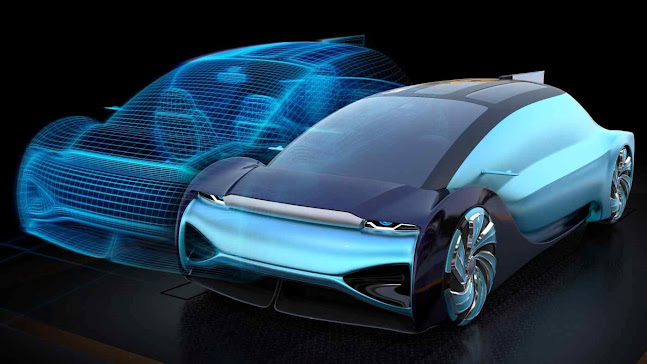The real future of the metaverse is not for consumers
The creation of virtual reality ‘digital twins’ will revolutionise the energy transition, emergency planning and medicine
Pekka Lundmark
 A 3D rendering of an electric car. With an exact virtual replica, companies possess a real-time simulation to gather data and improve performance © Haiyin Wang/Alamy
A 3D rendering of an electric car. With an exact virtual replica, companies possess a real-time simulation to gather data and improve performance © Haiyin Wang/AlamyIf the metaverse was a person, it would be a 30-year-old still in search of their first job.
There’s been a lot of hype around the phenomenon ever since Neal Stephenson coined the term in his 1992 novel Snow Crash.
Recent attention has focused on virtual reality gaming and social interactions within the consumer version of the metaverse.
But its older, and often neglected, siblings — the industrial and enterprise metaverses — are already being used to test future scenarios in industries such as aerospace, logistics and manufacturing.
The future is one of plural metaverses: consumer, enterprise and industrial.
If the consumer version is where you play, the enterprise one is where you can co-design with your customers and the industrial portal is where you manufacture it.
While many of the technologies of the industrial metaverse are still evolving, one has already taken hold: digital twins.
With a digital twin — an exact virtual replica — companies possess a real-time simulation to help them manage their operations while gathering data to drive performance.
Siemens has used digital twins to manage entire factories, while General Electric has built digital twins of jet engine components to predict their lifespan and optimise maintenance schedules.
Appledore Research projects the digital twin market will hit $10bn by 2025.
At Nokia’s 5G manufacturing hub in Oulu, Finland, the use of a digital twin, together with automation and other digital solutions, has helped us increase productivity by up to 30 per cent in a year and cut product defects by 50 per cent over four years.
This vision of the metaverse is the product of two broader trends towards digital-physical fusion and human augmentation.
By 2030, every physical device that can be digitally connected will be.
Eventually, every action in the digital world will have an effect in the physical world, and vice versa.
So, the metaverse isn’t dependent on a virtual reality headset.
Rather, it’s the coming together of complementary technologies, including cloud and edge (near the data source) computing, artificial intelligence, blockchain, the internet of things, virtual reality, augmented reality and digital twins.
There will be some fantastic experiences in the consumer metaverse, but the real opportunities will be in the enterprise and industrial ones, where we can address global challenges such as energy transition, climate change, productivity and growth.
Many of those solutions are in their infancy, but the early signs are promising.
For instance, the US Department of Energy’s Argonne National Laboratory is using a digital twin as part of its research and development of a next-generation nuclear reactor.
The geological data company Fugro has created a prototype digital twin for the Australian power company, TasNetworks, showing the real-time fire risk to power lines from vegetation — one of the main causes of wildfires.
Scientists led by teams from the University of Florida and Indiana University are building a digital twin of the human immune system, which they argue will be a major breakthrough for precision medicine and the treatment of diseases such as cancer and Covid-19.
A large part of our research over the past decade has been on the technologies that underlie the metaverse.
But it’s also about developing a collaborative advantage, which means working across sectors.
As society went from 3G to 4G, tech start-ups founded in garages took the world by storm.
But as we move from 5G into 6G, and digitalisation enters every industry and every facet of our lives, no one company can create, or own, all the elements required.
We need collaboration to build a metaverse that works for everyone.
The writer is president and chief executive of Nokia
0 comments:
Publicar un comentario